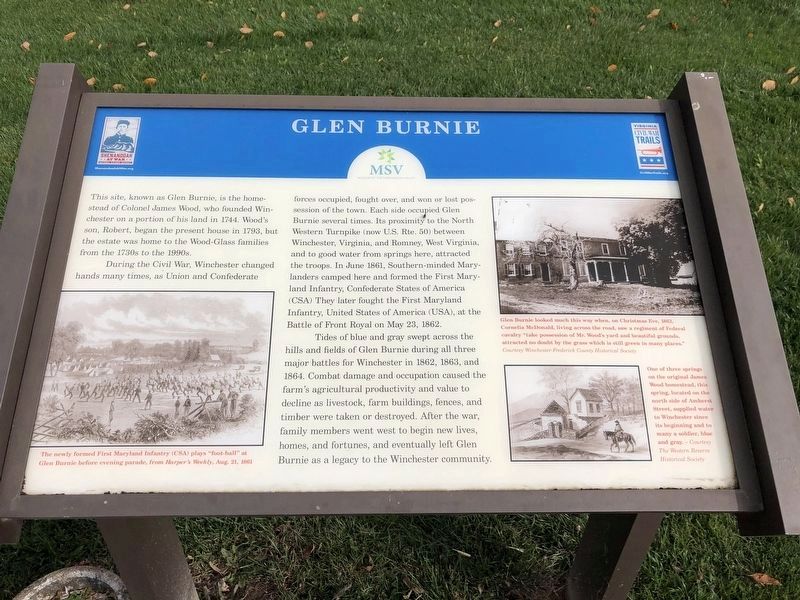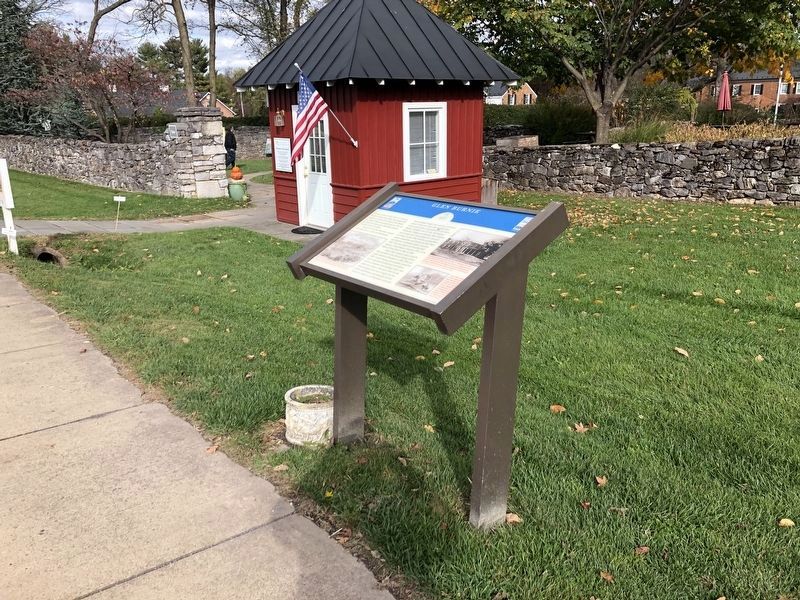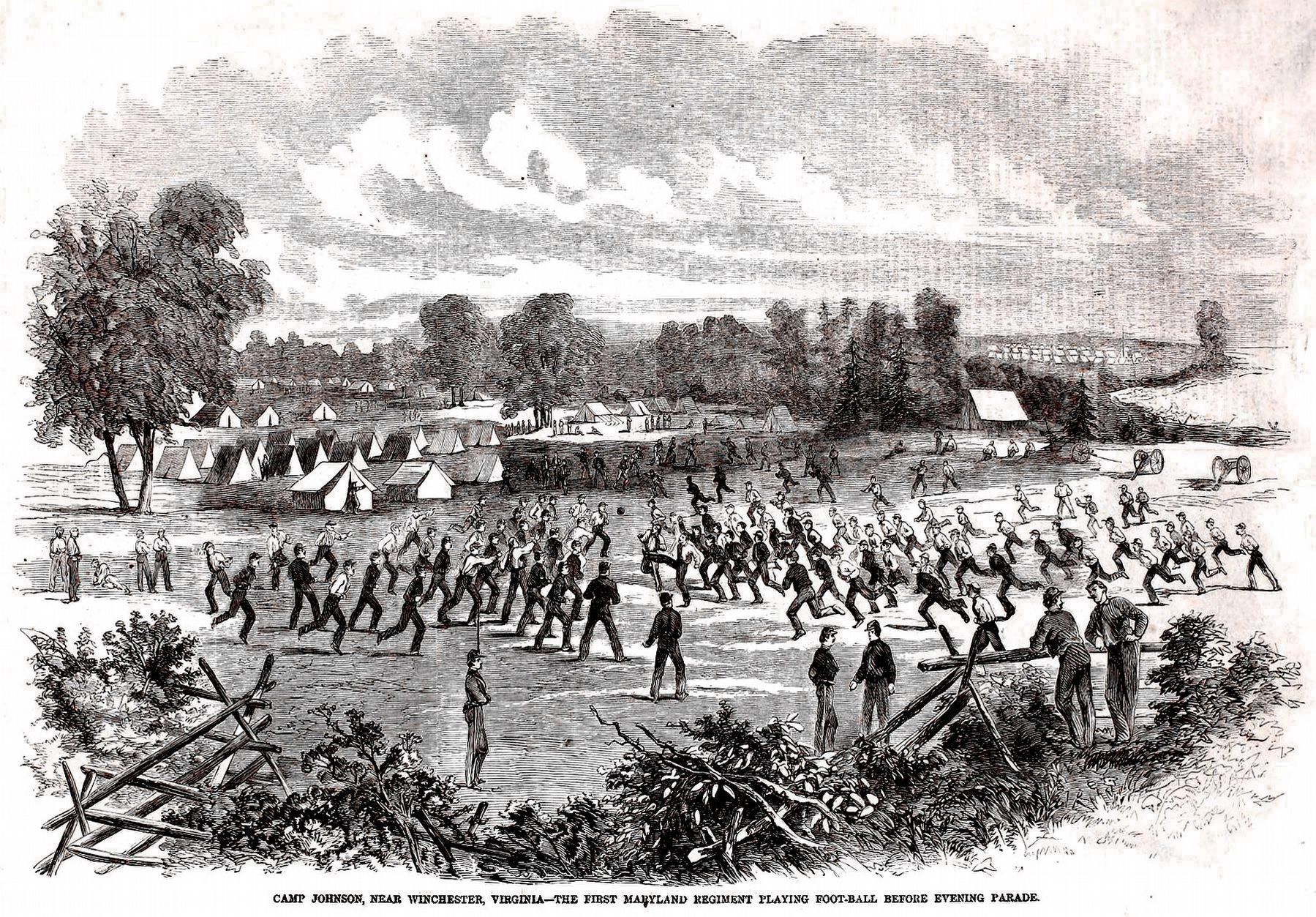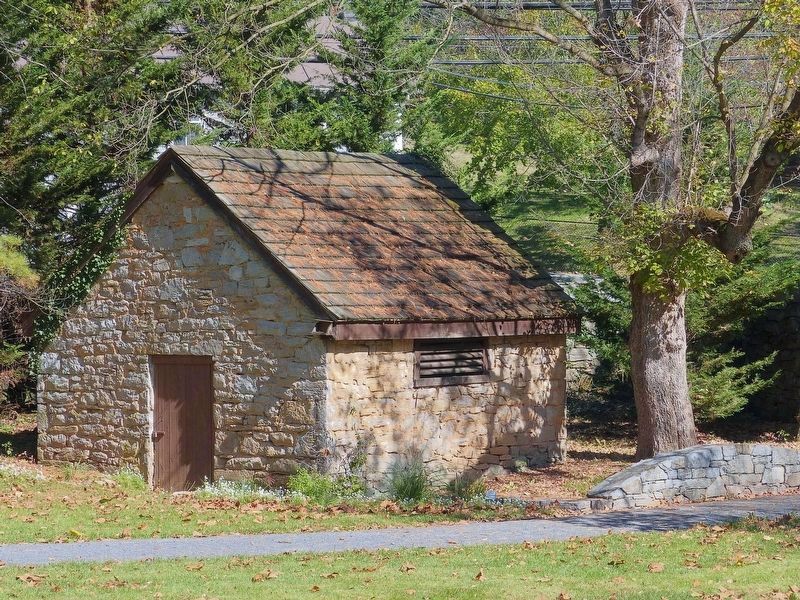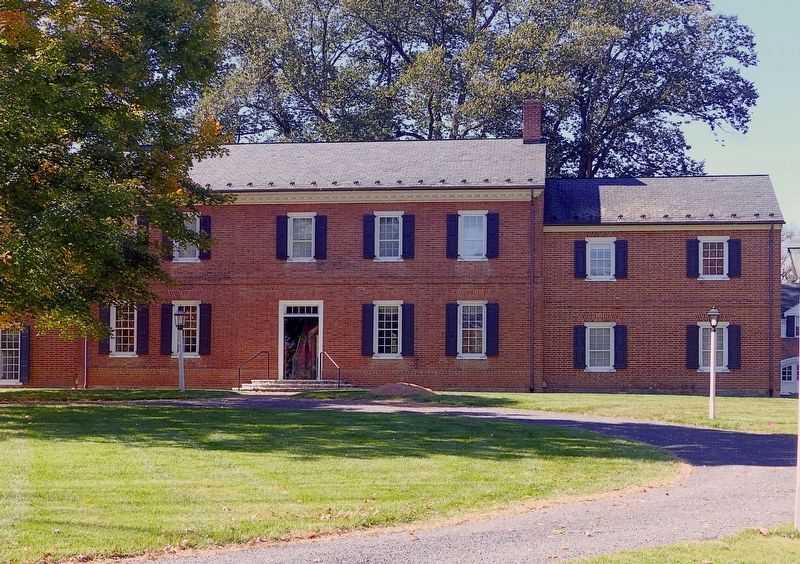Winchester, Virginia — The American South (Mid-Atlantic)
Glen Burnie
This site, known as Glen Burnie, is the homestead of Col. James Wood, who founded Winchester on a portion of his land in 1744. Wood’s son, Robert, began the present house in 1793, but the estate was home to the Wood-Glass families from the 1730s to the 1990s.
During the Civil War, Winchester changed hands many times, as Union and Confederate forces occupied, fought over, and won or lost possession of the town. Each side occupied Glen Burnie several times. Its proximity of the North Western Turnpike (now U.S. Rte. 50) between Winchester, Virginia, and Romney, West Virginia, and to good water from springs here, attracted the troops. In June 1861, Southern-minded Marylanders camped here and formed the First Maryland Infantry, Confederate States of America (CSA). They later fought the First Maryland Infantry, United States of America (USA), at the Battle of Front Royal on May 23, 1862.
Tides of blue and gray swept across the hills and fields of Glen Burnie during all three major battles for Winchester in 1862, 1863, and 1864. Combat damage and occupation caused the farm’s agricultural productivity and value to decline as livestock, farm buildings, fences and timber were taken or destroyed. After the war, family members went west to begin new lives, homes, and fortunes, and eventually left Glen Burnie as a legacy to the Winchester community.
(captions)
The newly formed First Maryland Infantry (CSA) plays "foot-ball" at Glen Burnie before evening parade, from Harper's Weekly, Aug. 21, 1861
Glen Burnie looked much this way when, on Christmas Eve, 1862, Cornelia McDonald living across the road, saw a regiment of Federal Cavalry ‘take possession of Mr. Wood’s yard and beautiful grounds, attracted no doubt by the grass which is still green in many places.” Courtesy Winchester-Frederick County Historical Society
One of three springs on the original James Wood homestead, this spring, located on the north side of Amherst Street, supplied water to Winchester since its beginning and to many a soldier, blue and gray. — Courtesy The Western Reserve Historical Society
Erected by Virginia Civil War Trails and Museum of the Shenandoah Valley.
Topics and series. This historical marker is listed in these topic lists: Settlements & Settlers • War, US Civil. In addition, it is included in the Virginia Civil War Trails series list.
Location. 39° 11.207′ N, 78° 10.781′ W. Marker is in Winchester, Virginia. Marker can be reached from the intersection of Amherst Street (U.S. 50) and Whittier
Other nearby markers. At least 8 other markers are within walking distance of this marker. Birthplace of James Wood, Junior (about 400 feet away, measured in a direct line); Home of Colonel James Wood, Sr. (about 400 feet away); a different marker also named Glen Burnie (about 700 feet away); Rear Admiral Richard E. Byrd (approx. 0.4 miles away); A "Malicious Design" (approx. half a mile away); Daniel Morgan House (approx. 0.6 miles away); Catherine B. Conrad (approx. 0.6 miles away); Little-Holiday House (approx. 0.6 miles away). Touch for a list and map of all markers in Winchester.
Also see . . .
1. Shenandoah Valley Battlefields Foundation (SVBF). (Submitted on November 13, 2019.)
2. Museum of the Shenandoah Valley. (Submitted on November 13, 2019.)
Credits. This page was last revised on November 2, 2020. It was originally submitted on November 13, 2019, by Linda Walcroft of Woodstock, Virginia. This page has been viewed 289 times since then and 32 times this year. Photos: 1, 2. submitted on November 2, 2020, by Devry Becker Jones of Washington, District of Columbia. 3, 4, 5. submitted on September 28, 2020, by Allen C. Browne of Silver Spring, Maryland. • Bernard Fisher was the editor who published this page.
